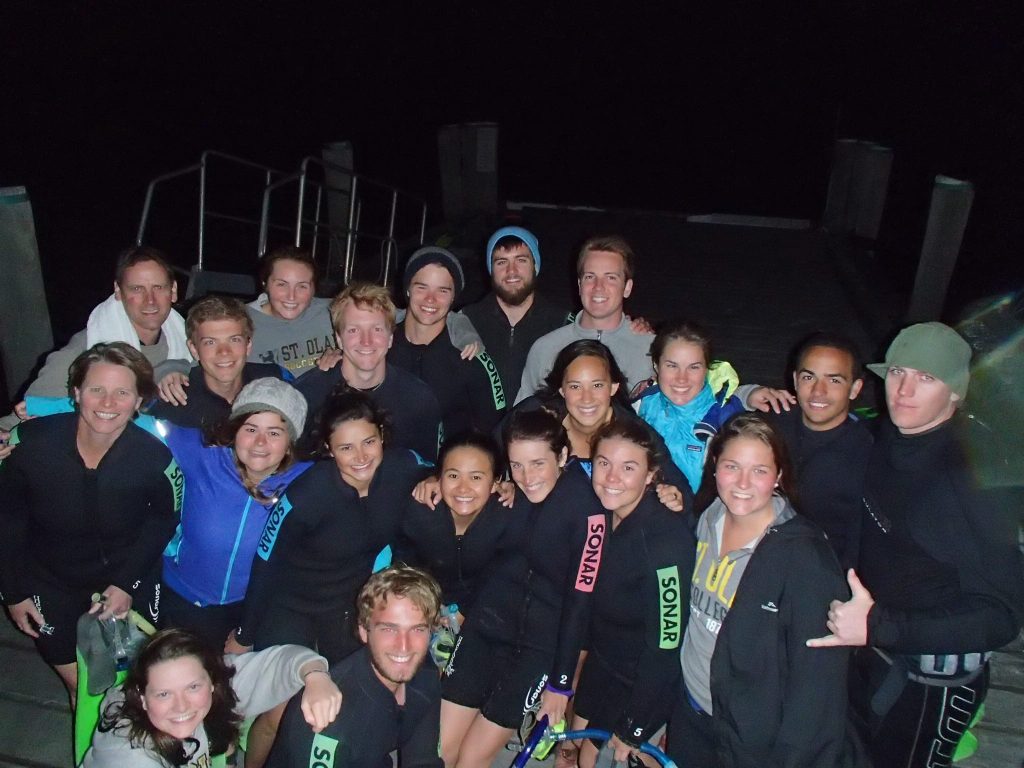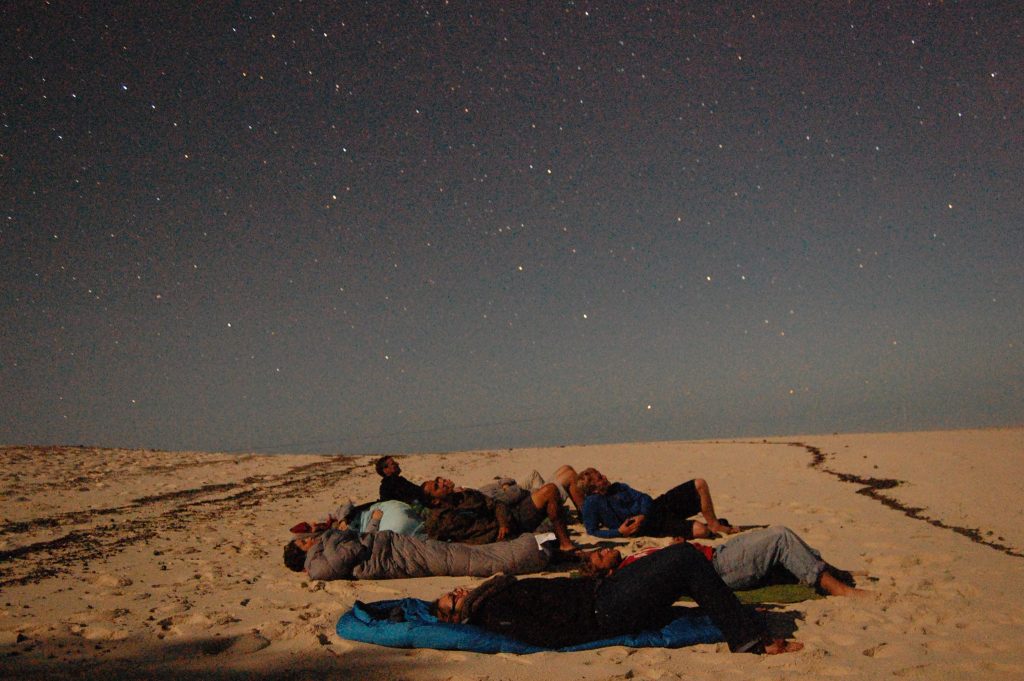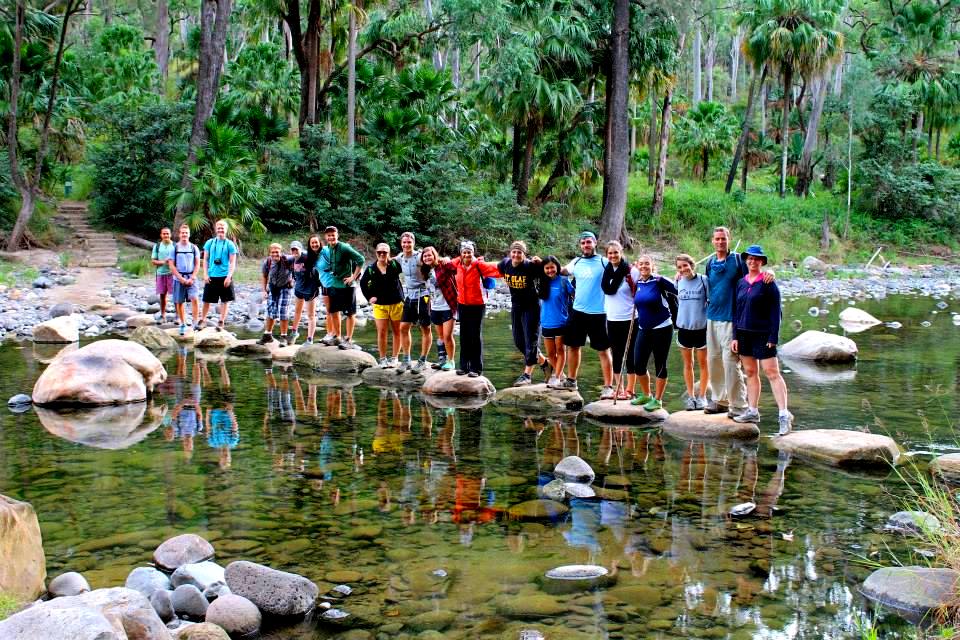During my time on the Hill, I was extremely blessed to have the opportunity to take part in some of St. Olaf’s study-abroad programs. Its terribly cliché to say, but I wholeheartedly believe that my study-abroad experiences at St. Olaf changed my life.
In the fall semester of 2012, my sophomore year at St. Olaf, there was a call-out to the Ole community for students to take part in a last-minute Environmental Science in Australia study-abroad program during the upcoming spring semester. The program wasn’t usually open to sophomore students, but there was something about needing more on-campus housing space that semester — so they opened it up. Naturally, I read up on the program, loved the hands-on learning aspects of it, and jumped at the chance to get to explore Australia as part of my degree. At the time I was a biology major on the pre-med track, and I was fully convinced that I was going to be a doctor and follow in the footsteps of my family. So applying for the trip was more a way to feed my wanderlust and love of the natural world than progress any of my career goals. Little did I know at the time how wrong I could’ve been.
The semester-long trip itself was unique in that it sends St. Olaf professors with a group of students to explore and learn from Australian experts in terrestrial ecology, political science, anthropology, and marine biology. Unlike other study-abroad programs that send you to a partnering international university to take classes for a semester, this trip truly embraced what traveling can teach you and took us to explore the east coast of Australia, getting lectures from local experts and designing our own research projects along the way. While the classes we took were in a wide array of subjects, there was an incredible amount of overlap and we were challenged to look at the bigger picture through an interdisciplinary lens and reflect on how interconnected each of these classes were. And not only was the trip content unbelievably interesting and often breathtaking, we had an incredible group of Oles — who quickly felt like family — to experience it all with!
I remember being particularly excited for the marine biology course. As a true 90’s girl, when I was growing up I was obsessed with dolphins (thank you, Flipper and Lisa Frank) and had fantasies of being a dolphin trainer. The only problem was that I’m from Wisconsin, where dolphins (and any other marine life, for that matter) are pretty hard to come by. So, as I got older and had a family who preferred mountain-based vacations to a beach holiday, that fantasy faded to the back of my mind. But traveling to Australia on the St. Olaf trip and getting introduced to some of the most beautiful marine environments in the world through our studies and excursions made it all come flooding back. It opened my eyes to an underwater world that I had only dreamt of and never recognized as within the realm of possibilities for my future. To be totally honest, it probably took me a year after returning from this study-abroad program to actually accept that medicine wasn’t my calling, and realize that I had never felt more alive or purpose-driven than when I was snorkeling around a tiny island in the south Great Barrier Reef doing a research project on sea cucumber resource partitioning for days on end.
“Those four courses from my St. Olaf trip directly influenced my understanding of the world and what I’m driven to pursue. The sense of fulfillment and alignment I got from that trip was never just about the picturesque island location and pristine underwater world, but rather how that magical realm fit in the context of everything else we had been learning about.”
My only problem then was that I was still in the Midwest, hundreds of miles from the nearest ocean, and I truly loved the community I had found at St. Olaf. So, instead of transferring to a new school and starting over at the end of my junior year, I opted out of the pre-med path, swapped to biology and environmental studies majors, started a Marine Biology Club, got open-water scuba certified in a Minnesota quarry, and got a job taking care of the fish tanks in Regents Hall. Baby steps, right? I got rejected from master’s degree programs and positions more times than I could probably count, as I didn’t have much experience in the field. I took unpaid internships and volunteer positions anywhere I could to at least dip my toes in marine biology and explore what aspects of the field I was (and was not) interested in. And when all else failed, I lived with my parents and worked at a pharmacy in my hometown to save money so I could eventually afford to travel and get my Divemaster certification. It definitely wasn’t the easy route, but any time I felt like giving up this crazy dream, I remembered how aligned I had felt at Heron Island on my study-abroad trip. I reminded myself of the experts and mentors we had on the trip who were excelling in marine biology, so surely there was some way I could too.
Thankfully, those baby steps slowly became big strides and then giant leaps. Eventually a “yes” finally came and I was accepted into a Divemaster course with a marine conservation program in Fiji, where I stayed for a year working with the local communities to promote fishing healthy coral reefs. And then another “yes” came and I was accepted into a world-ranked master’s degree program in Australia that I had only applied to on a whim. While studying there, I was reminded of the need for interdisciplinary research and more holistic approaches to the challenges our marine environments face like I had been exposed to on my St. Olaf trip. I realized my path in this field would be better suited if I could marry marine biology with human impact (ecological, cultural, and political) to explore common values between stakeholders and help drive tangible change. And now I’m working directly with the seafood industry towards conservation solutions in a role I absolutely adore.
I’m not sure I’ve properly thought about it before, but those four courses from my St. Olaf trip directly influenced my understanding of the world and what I’m driven to pursue. The sense of fulfillment and alignment I got from that trip was never just about the picturesque island location and pristine underwater world, but rather how that magical realm fit in the context of everything else we had been learning about.
So now, 11 years later, as I sit at my desk in coastal Australia writing this, I can’t help but smile and think how drastically different my life might be right now if I hadn’t taken that first big leap and applied for the Environmental Studies in Australia program at St. Olaf. It opened the door to a path I hadn’t even considered and reminded me of a passion my Midwestern-self never quite understood. And for that, I’ll forever be grateful.


